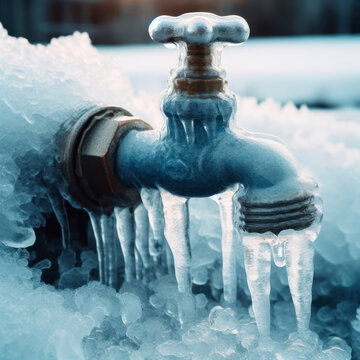Prevent Frozen Pipes in Winter: Professional Advice
Prevent Frozen Pipes in Winter: Professional Advice
Blog Article
How do you feel when it comes to Prevent Frozen Pipes ?

Winter can damage your plumbing, specifically by freezing pipes. Here's just how to stop it from taking place and what to do if it does.
Introduction
As temperatures decline, the danger of icy pipelines boosts, possibly leading to expensive repair services and water damages. Comprehending how to prevent icy pipelines is crucial for homeowners in cold climates.
Comprehending Frozen Pipes
What triggers pipes to ice up?
Pipelines ice up when subjected to temperature levels listed below 32 ° F (0 ° C) for prolonged durations. As water inside the pipes ices up, it broadens, putting pressure on the pipeline walls and potentially causing them to break.
Dangers and problems
Frozen pipes can cause supply of water disturbances, home damage, and costly repairs. Burst pipes can flood homes and cause considerable architectural damages.
Indicators of Frozen Water Lines
Identifying frozen pipelines early can stop them from bursting.
Just how to determine frozen pipes
Search for lowered water flow from taps, uncommon smells or sounds from pipes, and visible frost on revealed pipelines.
Prevention Tips
Insulating at risk pipes
Wrap pipes in insulation sleeves or utilize heat tape to safeguard them from freezing temperature levels. Concentrate on pipelines in unheated or external locations of the home.
Home heating techniques
Keep indoor spaces effectively heated, especially areas with plumbing. Open up closet doors to allow cozy air to circulate around pipes under sinks.
Protecting Outside Pipes
Yard hoses and outside taps
Separate and drain pipes yard tubes before winter season. Mount frost-proof spigots or cover outdoor taps with insulated caps.
What to Do If Your Pipelines Freeze
Immediate actions to take
If you think frozen pipelines, maintain faucets open to alleviate pressure as the ice melts. Use a hairdryer or towels taken in warm water to thaw pipelines slowly.
Long-Term Solutions
Structural adjustments
Think about rerouting pipes away from outside walls or unheated locations. Add additional insulation to attics, cellars, and crawl spaces.
Updating insulation
Purchase top quality insulation for pipelines, attic rooms, and wall surfaces. Correct insulation helps maintain regular temperatures and minimizes the danger of frozen pipes.
Final thought
Stopping frozen pipelines requires aggressive actions and fast actions. By recognizing the reasons, signs, and preventive measures, home owners can secure their pipes throughout winter.
5 Ways to Prevent Frozen Pipes
Drain Outdoor Faucets and Disconnect Hoses
First, close the shut-off valve that controls the flow of water in the pipe to your outdoor faucet. Then, head outside to disconnect and drain your hose and open the outdoor faucet to allow the water to completely drain out of the line. Turn off the faucet when done. Finally, head back to the shut-off valve and drain the remaining water inside the pipe into a bucket or container. Additionally, if you have a home irrigation system, you should consider hiring an expert to clear the system of water each year.
Insulate Pipes
One of the best and most cost-effective methods for preventing frozen water pipes is to wrap your pipes with insulation. This is especially important for areas in your home that aren’t exposed to heat, such as an attic. We suggest using foam sleeves, which can typically be found at your local hardware store.
Keep Heat Running at 65
Your pipes are located inside your walls, and the temperature there is much colder than the rest of the house. To prevent your pipes from freezing, The Insurance Information Institute suggests that you keep your home heated to at least 65 degrees, even when traveling. You may want to invest in smart devices that can keep an eye on the temperature in your home while you’re away.
Leave Water Dripping
Moving water — even a small trickle — can prevent ice from forming inside your pipes. When freezing temps are imminent, start a drip of water from all faucets that serve exposed pipes. Leaving a few faucets running will also help relieve pressure inside the pipes and help prevent a rupture if the water inside freezes.
Open Cupboard Doors
Warm your kitchen and bathroom pipes by opening cupboards and vanities. You should also leave your interior doors ajar to help warm air circulate evenly throughout your home.

We were shown that article about How to Prevent Your Pipes From Freezing from a friend on our other web property. Sharing is good. Helping people is fun. Many thanks for being here. Please check our site back soon.
Book Today Report this page